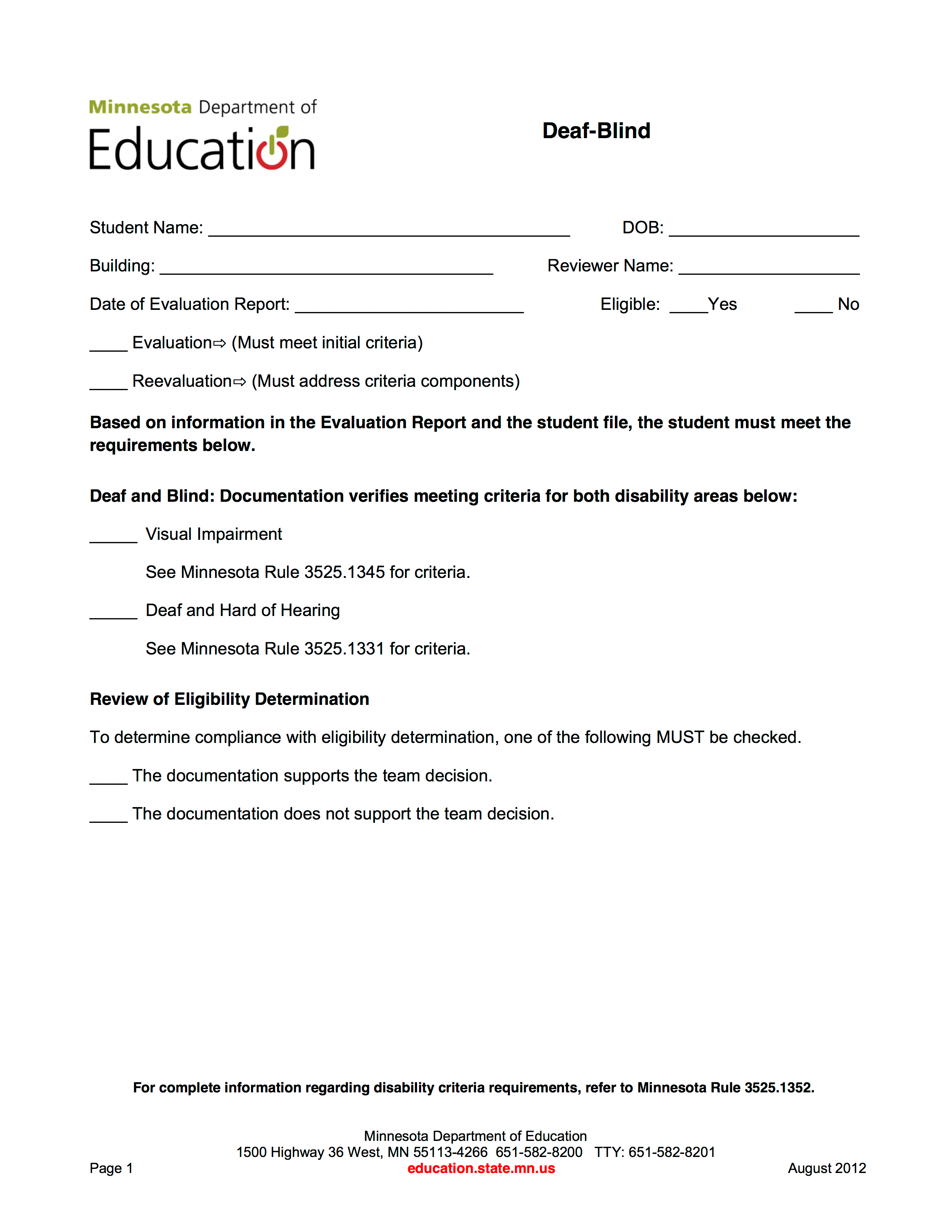
Deaf-Blindness
Disability Label & Prevalence |
Definition |
General Characteristics |
Identification & Assessment |
Educational Approaches |
Educational Placement Alternatives |
|
Deaf-Blindness 1,359 children served in 2009-2010 |
|
Self-stimulatory behavior, lacks: communication skills, motor and mobility skills, and appropriate social behavior. | Eye exams, hearing exams | Students should be taught: functionality, age-appropriateness, communication, literacy, recreation and leisure, making choices, access to general education curriculum, selecting and prioritizing instructional targets. | General Education Classroom Resource Room Programs Separate Classrooms Special schools Residential Facilities Home/Hospital |
Description of 2 evidence-based strategies |
Systematic Instruction: Systematic Instruction: A carefully planned sequence for instruction, similar to a builder’s blueprint for a house characterizes systematic instruction. A blueprint is carefully thought out and designed before building materials are gathered and construction begins. (CDE: Colorado Department of Education) Teach vocabulary using the representation mode(s) most familiar to the child (e.g. objects, pictures, tactile symbol, print, braille):
(Literacy for Children with Combined Vision and Hearing Loss) |
Practitioner Based Article related to this area: Include reference and summary of the article. |
Without reliable access to clear visual and auditory information, children who are deaf-blind must rely on additional modes of learning, such as learning through touch. For many of these children, touch is a primary mode of communication. Although a variety of tactile strategies are frequently used with children who are deaf-blind, there is little re search-based evidence that validates their use. Identifying effective tactile strategies for deaf-blind children who also have cognitive or physical disabilities is particularly challenging. Project SALUTE (Successful Adaptations for Learning to Use Touch Effectively), a federally funded model demonstration project, is addressing the need for a more informed approach to the use of these methods. The goal of the project is to identify, develop, and validate tactile instructional strategies for children who have hearing loss and no functional vision, plus additional cognitive and physical disabilities (Deborah Chen, June Downing, Gloria Rodriguez-Gil, & California State University, 2001) |
MN Eligibility Checklist
